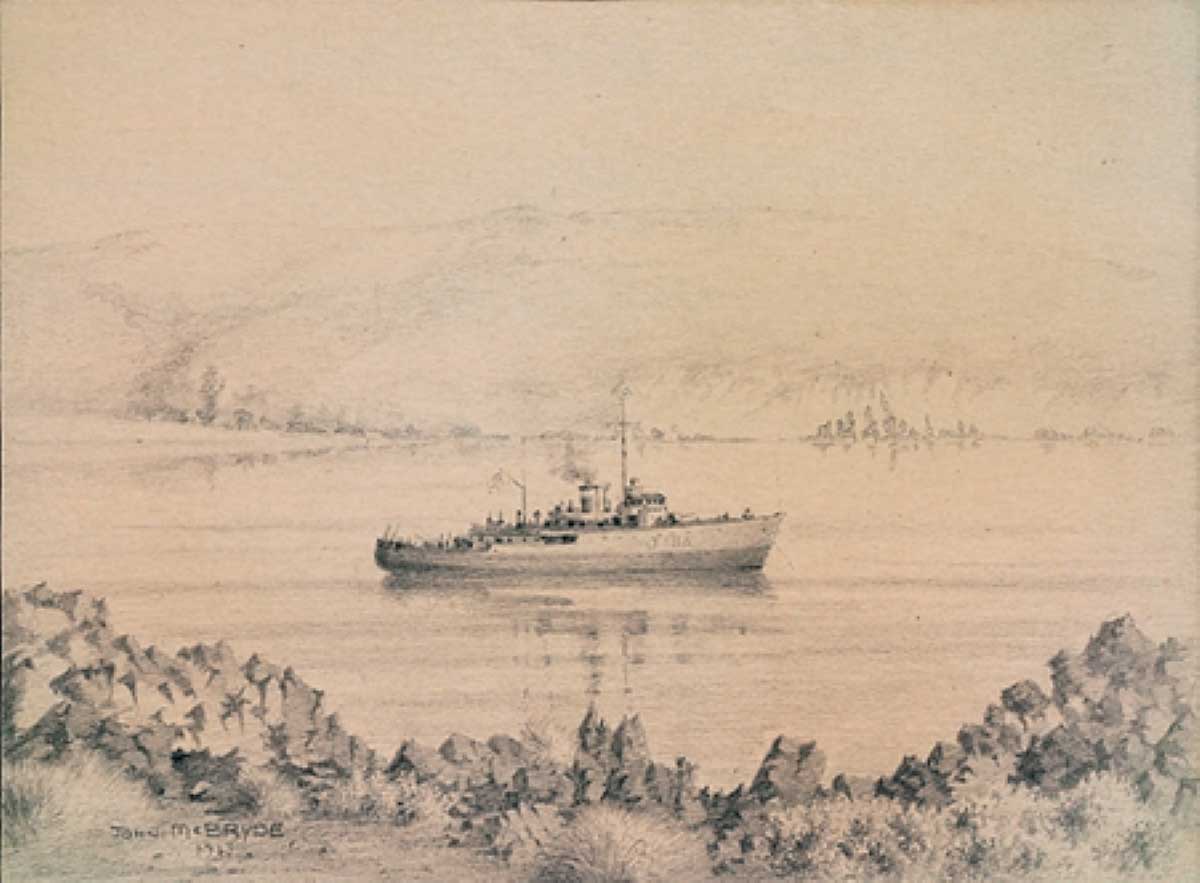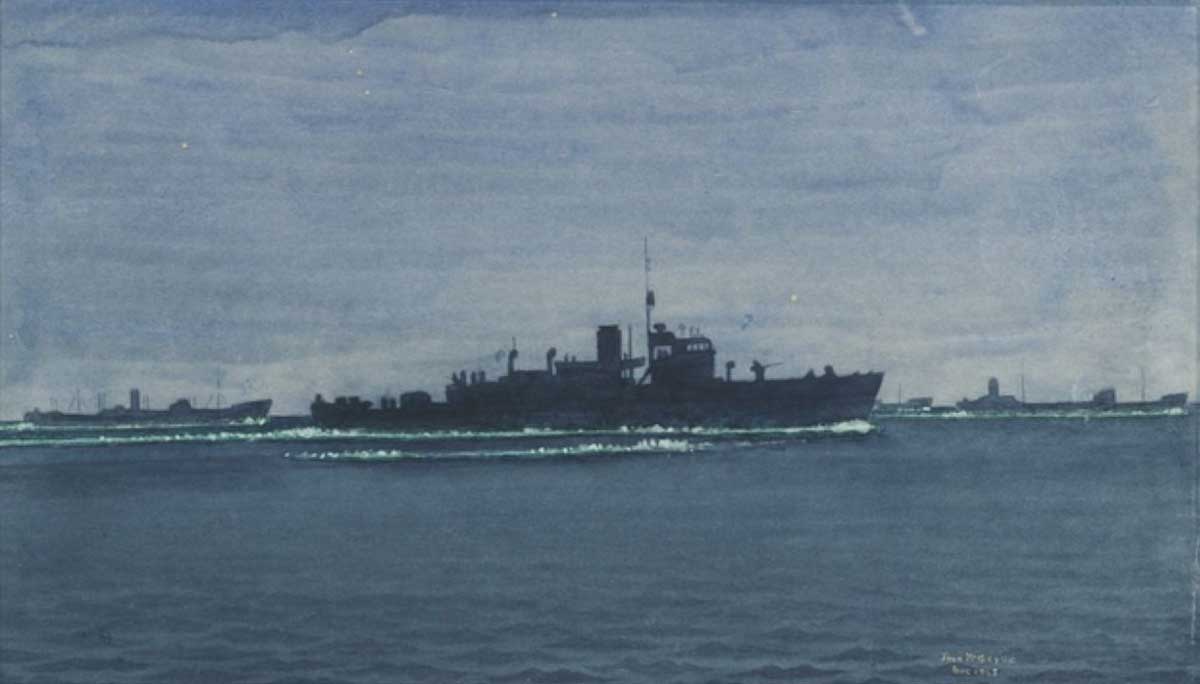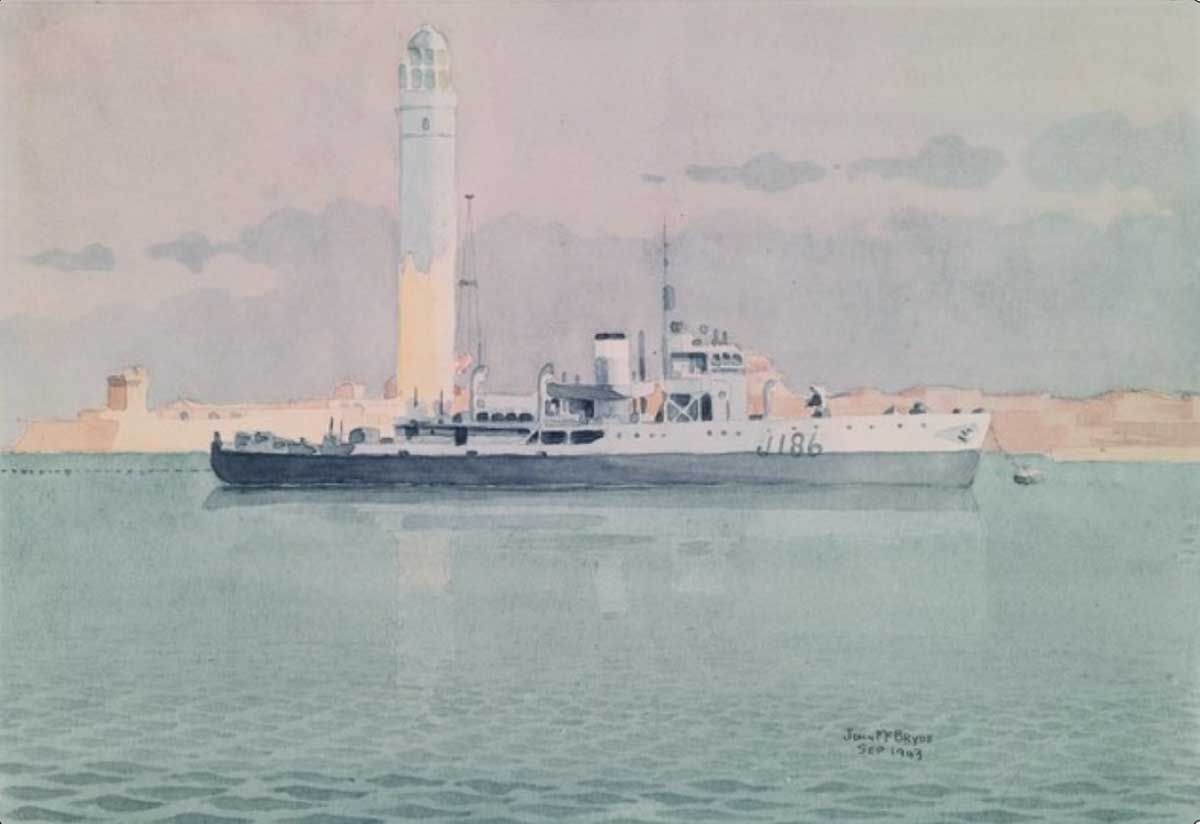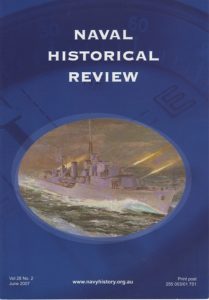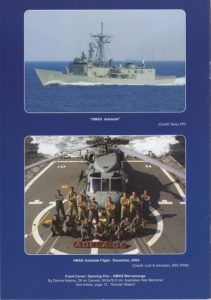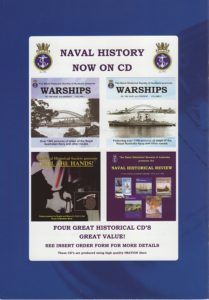HMAS Ipswich (l) at Khor Khui entrance to the Persian Gulf, 1943
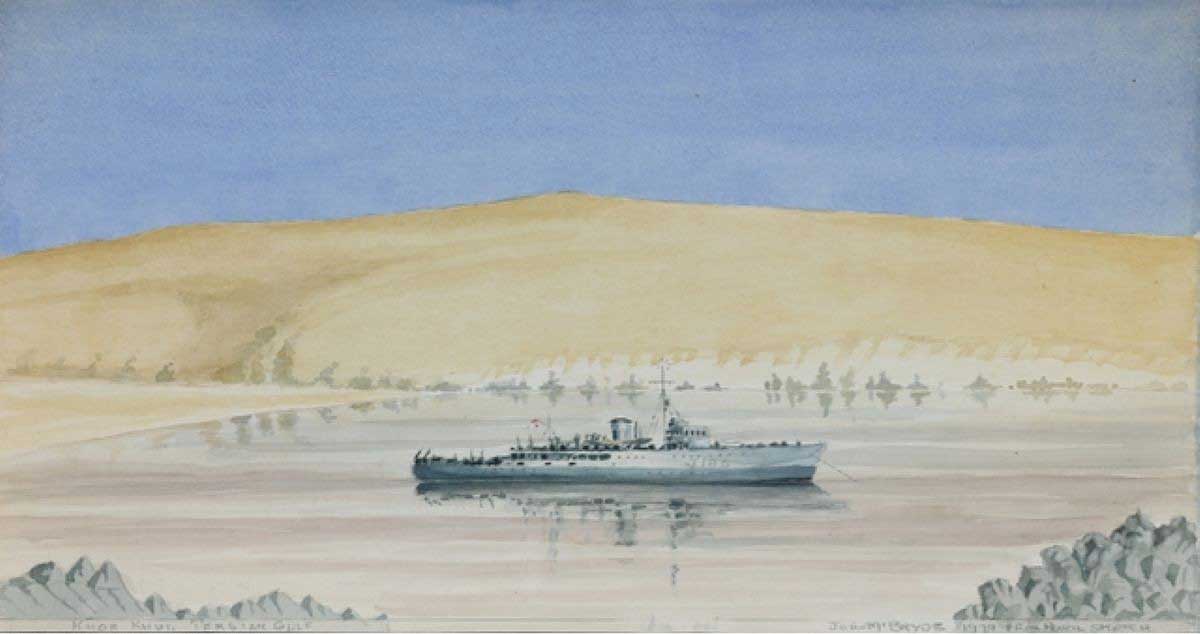
HMAS Ipswich anchored at Khor Khui awaiting escort vessels. The long, sheltered inlet at Khor Khui (also known as Khor al Quway or Khor Kuwai), which is the entrance to the Persian Gulf on the Arabian side of the Strait of Ormuz, was a safe refuge where vessels could anchor between periods of duty while refueling and re-supplying. The man-made form of Ipswich is dwarfed by the surrounding landscape; the hill in the background and the inlet itself far out-stretch the Ipswich, rendering the passivity of nature far more compelling than the man-made war vessel.
- About John McBryde
Little is known of John Smyth McBryde who was born in Port Logan, Scotland on 30 May 1896.
During World War 2 he served in numerous ships including HMAS Ipswich.
At the time of Cessnock’s collision on 8 May 1943 HMAS Ipswich was serving in the same theatre of operations. That is, on escort and anti-submarine patrol duty in the western Indian Ocean and between the Persian Gulf and India. In May 1943 she was transferred to the Mediterranean for service as a unit of the 21st Minesweeping Flotilla. In the Mediterranean she took part in the Sicily campaign and on escort and patrol duty she steamed over a wide area of the Mediterranean.
There is a strong possibility that John McBryde either witnessed the collision or had first-hand knowledge of this event in the Red Sea.
- About HMAS Ipswich (l)
HMAS Ipswich was one of fifty-six Bathurst Class, Australian Minesweepers (commonly known as corvettes) built during World War II in Australian shipyards. Ipswich was almost constantly at sea on escort and anti-submarine patrol duty in the western Indian Ocean and between the Persian Gulf and India.
More reading
- Additional resources for John McBryde
- Additional resources for HMAS Ipswich (l)
